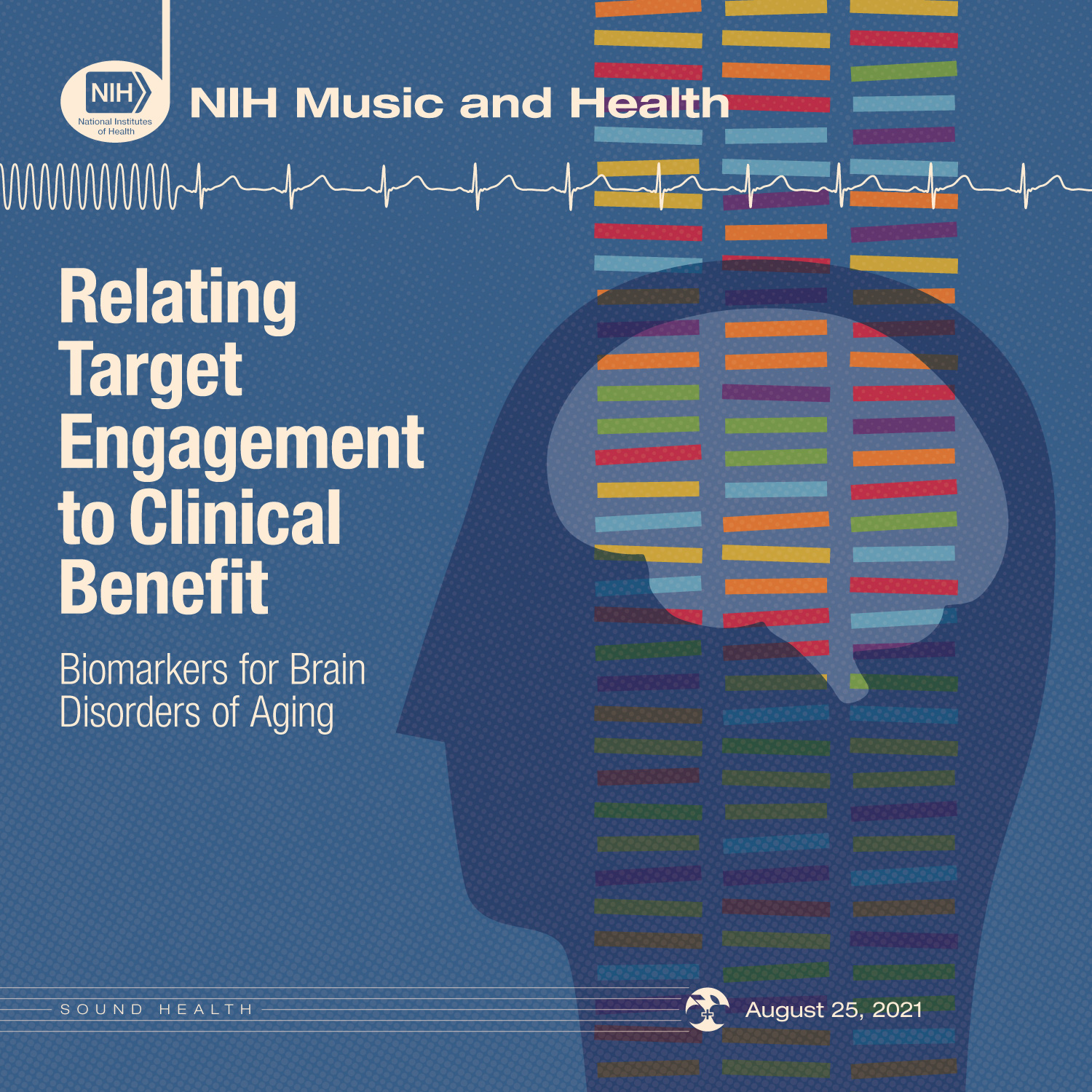Music and Health: Relating Target Engagement to Clinical Benefit—Biomarkers for Brain Disorders of Aging
Date: August 25, 2021 - 1:00 p.m. ET to 5:00 p.m. ET
Virtual
Event Description
This is the last of three meetings that are part of Phase I of a National Institutes of Health (NIH)/Foundation for the National Institutes of Health (FNIH) project to develop evidence-based music therapies for brain disorders of aging.
This meeting will gather input from participants in the music therapy/music medicine, neuroscience, behavioral intervention development, clinical trial methodology, and patient advocacy/art organization communities. The NIH planning committee will identify and catalog a set of reliable, broadly accessible biomarkers to objectively and quantitatively monitor the responses of the brain and other physiological systems to music-based interventions in clinical studies. This core dataset of biomarkers will be used in future NIH-funded music-based intervention protocols.
- Download the program book, which includes abstracts, bios, and panelists' questions
NIH Music and Health Meeting Series:
- March 31, 2021: Laying the Foundation: Defining the Building Blocks of Music-Based Interventions
- June 18, 2021: Music and Health: Assessing and Measuring Target Engagement—Mechanistic and Clinical Outcome Measures for Brain Disorders of Aging
- August 25, 2021: Relating Target Engagement to Clinical Benefit: Biomarkers for Brain Disorders of Aging

Watch the event:
Agenda
1:00–1:10 p.m. | Welcome
- Francis S. Collins, M.D., Ph.D., Director, NIH
1:10–1:15 p.m. | Opening Notes to Music-Based Interventions for Brain Disorders of Aging
- Coryse St. Hillaire-Clarke, Ph.D., Program Director, Sensory and Motor Disorders of Aging Program, Division of Neuroscience, National Institute on Aging
1:15–1:40 p.m. | Biomarkers: Key Instruments for Music-Based Interventions in Aging
- Steve Hoffmann, M.S., Associate Vice President, Research Partnerships, FNIH; Director, Biomarkers Consortium
Presentation (20 minutes)
Question and Answer Session (5 minutes)
1:40–1:50 p.m. | Charge to Panelists and Thematic Group Discussion Setup
- Emmeline Edwards, Ph.D., Director, Division of Extramural Research, National Center for Complementary and Integrative Health
- Alan Weil, M.P.P., J.D., Editor-in-Chief, Health Affairs
1:50–2:20 p.m. | Question 1: Music-based interventions have the potential to manage symptoms, slow disease progression, rehabilitate, and improve quality of life. Knowing that important domains of brain disorders of aging are emotion, cognition, and motor and sensory function, what are important considerations for selecting biomarkers for Alzheimer’s disease and Alzheimer’s disease–related dementias, Parkinson’s disease, and stroke?
2:20–2:50 p.m. | Question 2: What types of biomarkers (predictive, prognostic, diagnostic, disease progression, treatment response) could be linked to clinical outcomes in music-based interventions for Alzheimer’s disease and Alzheimer’s disease–related dementias, Parkinson’s disease, and stroke?
2:50–3:10 p.m. | Question 3: In music-based intervention protocols, can we identify markers that are associated with biological effects and clinical benefits?
Examples of behavioral and biological markers (nonexhaustive):
- Receptor occupancy (positron emission tomography [PET])
- Hippocampal volume (structural imaging)
- Engagement of relevant brain systems (functional magnetic resonance imaging [fMRI], clinical electrophysiology—electroencephalography [EEG], frequency-following response [FFR], neurocognitive performance, and emotional reactivity)
- Body sway (ecological momentary assessment [EMA], sensor and mobile technologies)
- Blood/cerebrospinal fluid (CSF) markers (e.g., CSF {beta}-amyloid 42 and tau proteins)
- Retinal and/or skin biometric responses
- Genetic/epigenetic markers
- Markers of affect (tone of voice) and nonverbal communication (facial expression)
3:10–3:20 p.m. | Break
3:20–4:25 p.m. | Demonstration Projects
Presentation of prototype projects (case studies) by multidisciplinary panelist teams applying the principles discussed in the three convenings.
Project 1: Music-based interventions for early- and/or midstage Alzheimer’s disease and Alzheimer’s disease–related dementias, addressing behavioral and psychological symptoms of dementia (BPSD)
Project 2: Music-based interventions for Parkinson’s disease, addressing both motor and nonmotor symptoms
4:25–4:55 p.m. | Broad Question and Answer Session
- NIH VideoCast audience and Zoom meeting participants
4:55–5:00 p.m. | Wrap-Up and Next Steps
- Robert Finkelstein, Ph.D., Director, Division of Extramural Activities, National Institute of Neurological Disorders and Stroke
Individuals who need reasonable accommodation to participate should contact info@nccih.nih.gov or the Federal Relay, 1-800-877-8339, by Wednesday, August 11.